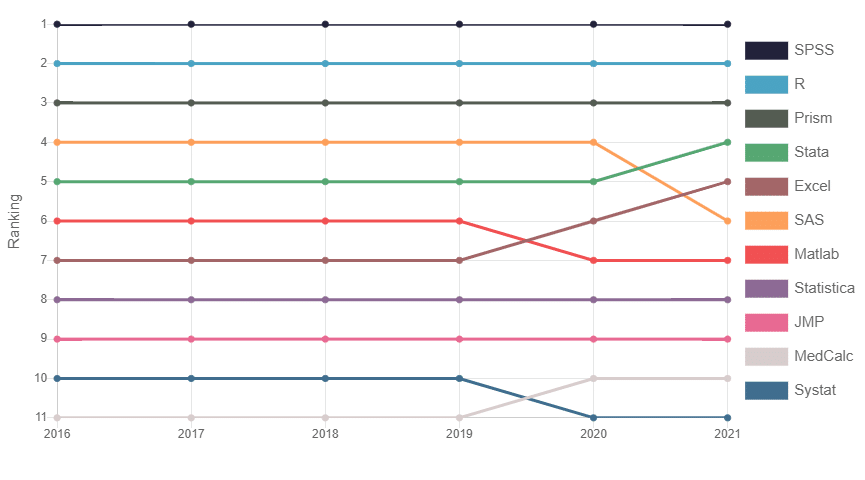
Python is also the easiest language to use when using Big Data Frameworks like Spark. Python is therefore also strong in analysing images and videos, for example we’ve used Python this summer to build our own autonomous driving RC car. Python is mostly used in Data Mining or Machine Learning applications where a data analyst doesn’t need to intervene. Hence, we see that the statistical capabilities are primarily focused on the predictive side. This makes Python very powerful when algorithms are directly used in applications. Python is developed with a strong focus on (business) applications, not from an academic or statistical standpoint. Ergo R has the widest range of algorithms, which makes R strong on the explanatory side and on the predictive side of Data Analysis. R was created by academics, who wanted their algorithms to spread as easily as possible. One of the major advantages of open source tooling is that the community continuously improves and increases functionality. Nowadays, SAS and SPSS both have data mining tools (SAS Enterprise Miner and SPSS Modeler), however these are different tools and you’ll need extra licenses. This makes that they have significant less methods and techniques in comparison to R and Python. They are developed in an academic environment, where hypotheses testing plays a major role. When we’re looking at SPSS and SAS, both of these languages originate from the explanatory side of Data Analysis.

The predictive side of Data Analysis is closely related to terms like Data Mining and Machine Learning. These are two fundamentally different questions and this has implications for the decisions you take along the way. Let’s take Customer Churn as an example, you can ask yourself why are customers leaving? Or you can ask yourself which customers are leaving? The first question has as its primary goal to explain churn, while the second question has as its primary goal to predict churn. The decisions you make during the modeling process depend on your goal. My vision on Data Analysis is that there is continuum between explanatory models on one side and predictive models on the other side. We explicitly focus on the languages, the user interfaces SAS Enterprise Miner and SPSS Modeler are out of scope. In this article, we compare the four languages on methods and techniques, ease of learning, visualisation, support and costs. That’s why Python definitely belongs in this list. Programmers carried on and created lots of modules on top of Python and it therefore has a wide range of statistical modeling capabilities nowadays. Python is a multi-purpose language, like C++ and Java, with the big difference and advantage that Python is way easier to learn.
#Sas jmp vs spss how to#
ABC is a language, also created by him, with the goal to teach non-programmers how to program. He needed a project during Christmas and created this language which is based on ABC. Python was created by a Dutch guy who is a big fan of Monty Python (where the name comes from). Python is the only one that was not developed at a university. In 2000 the University of Auckland released the first version of R, a programming language primarily focused on statistical modeling and was open sourced under the GNU license. was founded, which was bought by IBM in 2009. It was developed in 1968 at the Stanford University and eight years later the company SPSS Inc. Statistical Package for the Social Sciences ( SPSS) was developed for the social sciences and was the first statistical programming language for the PC.

#Sas jmp vs spss software#
In 1976 the company SAS was founded as the demand for such software increased. The abbreviation SAS stands for Statistical Analysis System. SAS was developed at the North Carolina State University and was primarily developed to be able to analyse large quantities of agriculture data. And even if they haven’t (yet), most commercial software packages (including SAS and SPSS) make it possible to connect to R and Python nowadays. In recent years, some of our clients migrated from using SAS or SPSS to using R and/or Python. However, the interest for the open source languages R and Python is increasing. Of these SAS and SPSS are probably the most used.

When we’re working for clients we mostly come across the statistical programming languages SAS, SPSS, R and Python.


 0 kommentar(er)
0 kommentar(er)
